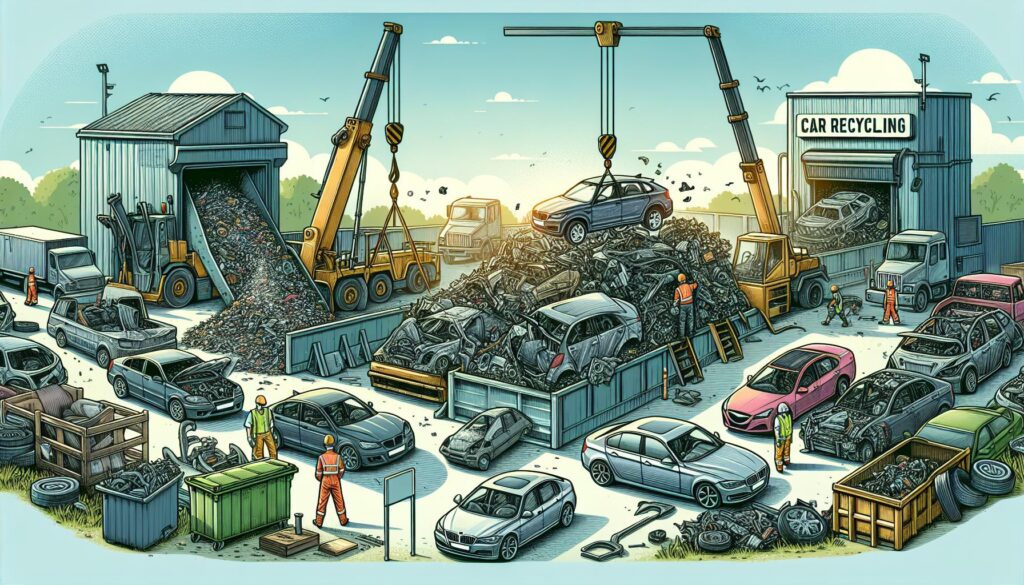Car Recycling: A Sustainable Approach to Tackling Automotive Waste
As the global car population continues to rise, so does the challenge of managing end-of-life vehicles (ELVs). Car recycling offers a sustainable and eco-friendly solution to this problem. By repurposing materials and components from old, damaged, or disassembled cars, the automotive recycling industry can significantly reduce environmental impact while contributing to resource conservation and economic growth.
The Importance of Car Recycling
The significance of car recycling cannot be overstated. Automobiles are complex machines made up of various metals, plastics, rubber, and other materials. When these materials are not managed responsibly at the end of a vehicle’s life cycle, they can cause severe environmental harm. Car recycling helps mitigate these risks, offering several key benefits:
- Reduction of Waste: Recycling keeps millions of tons of automotive waste out of landfills every year. This reduces pollution and conserves landfill space.
- Resource Conservation: By recycling materials, we conserve natural resources like iron ore, coal, and limestone, which are needed to produce new automotive parts.
- Energy Savings: Recycling metals and other materials require significantly less energy compared to manufacturing them from raw materials.
- Economic Benefits: The car recycling industry generates employment and fosters economic growth through the sale of recycled materials and parts.
The Car Recycling Process
The car recycling process involves several stages, each designed to maximize the recovery and reuse of valuable materials. Here’s an overview of how recycling centers handle end-of-life vehicles:
1. Collection and Transportation
The first step in car recycling is the collection of ELVs. Vehicles deemed no longer roadworthy are transported to recycling centers. This initial phase often involves working with towing services and dealerships to gather cars ready for disposal.
2. Depollution
Once the vehicles arrive at the recycling facility, they undergo a depollution process. This step involves safely removing hazardous materials such as:
- Fuel
- Oil
- Brake fluid
- Coolant
- Battery acid
Proper handling and disposal of these substances prevent environmental contamination and enhance worker safety.
3. Dismantling
The next stage involves dismantling the vehicle to recover usable parts. Components such as engines, transmissions, radiators, and catalytic converters can often be refurbished and sold. This step not only provides a supply of affordable used parts for consumers but also reduces the demand for new manufacturing.
4. Shredding and Sorting
After salvaging reusable parts, the remaining car body is sent through a shredder. The shredded material is then sorted into different categories, primarily by type of metal. Advanced sorting technologies use magnets, eddy currents, and air classification to separate:
- Steel: The most commonly recycled material, steel is sent to mills for processing.
- Aluminum: This lightweight metal is separated and sent to refineries for reuse.
- Non-metallic Residue: Known as automotive shredder residue (ASR), these materials are typically disposed of, though efforts are ongoing to find recycling solutions for this fraction.
5. Recycling and Reuse
The sorted metals are then melted down and remanufactured into new products. For instance, recycled steel and aluminum are used to make new cars, packaging materials, construction products, and more. Utilizing recycled materials in manufacturing helps to conserve virgin resources and reduce the carbon footprint associated with production.
Technological Advancements in Car Recycling
With the advancement of technology, the car recycling process has become increasingly efficient and effective. Innovations include:
- Automated Dismantling: Robotic systems enhance precision and speed in the disassembly of vehicles, ensuring maximum recovery of valuable parts.
- Advanced Sorting Technology: New methods of sorting materials use sophisticated techniques to improve the purity and quality of recycled outputs.
- Improved Recycling Processes: Enhanced methods for recycling ASR and other challenging materials support better environmental outcomes.
How You Can Contribute
As consumers, there are several ways to support car recycling and promote sustainability:
- Choose Recycled Parts: Opt for refurbished or recycled auto parts when repairing your vehicle.
- Proper Disposal: Ensure your end-of-life vehicle is sent to a certified recycling center for responsible disposal.
- Stay Informed: Educate yourself about the environmental and economic benefits of car recycling to make more sustainable choices.
Conclusion
Car recycling is a vital industry that plays a crucial role in minimizing the environmental impact of automotive waste. Through efficient collection, depollution, dismantling, and recycling processes, recycling centers can recover valuable materials and parts, conserve resources, and reduce pollution. With ongoing technological advancements and increased consumer awareness, the future of car recycling looks promising. For more information on how to recycle cars and the benefits it brings, visit the detailed article on Automoblog’s car recycling page.
Sell Your Car Parts for Cash At Giant Imports.
Together, we can contribute to a greener, more sustainable world by supporting and participating in automotive recycling.





